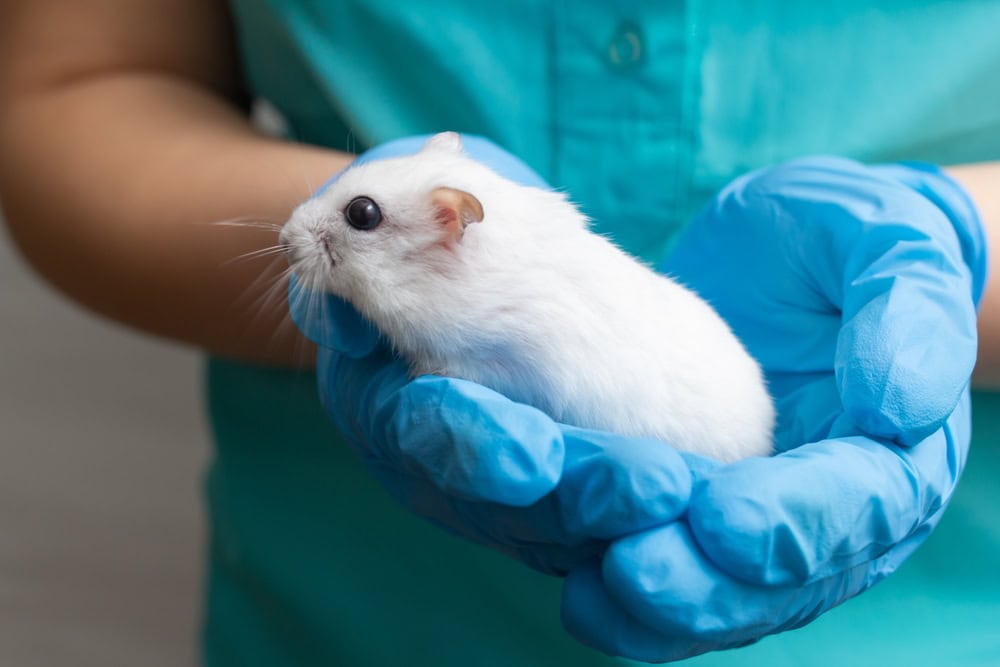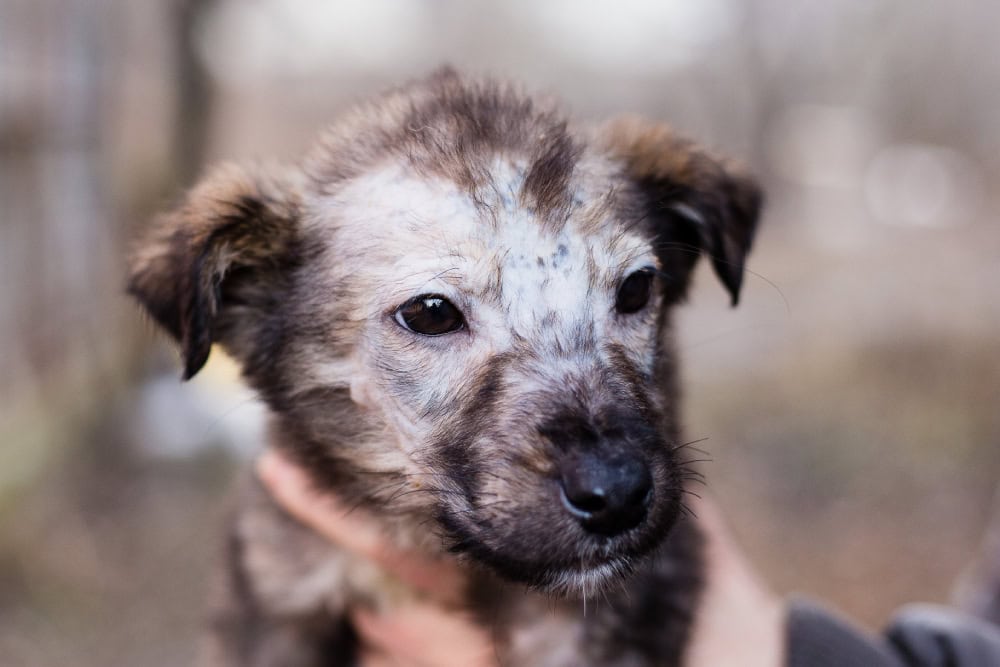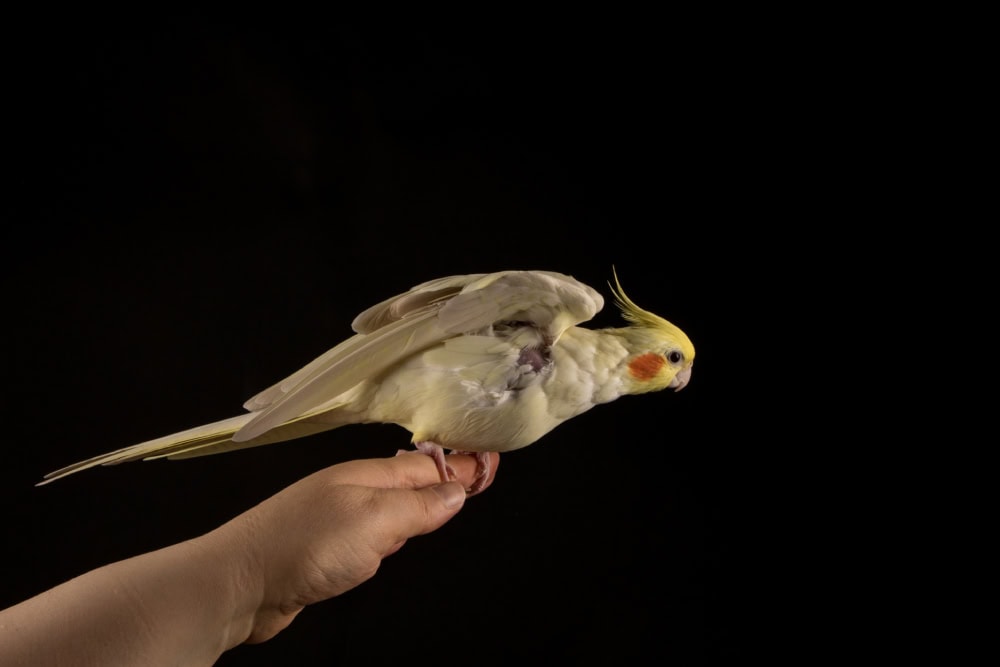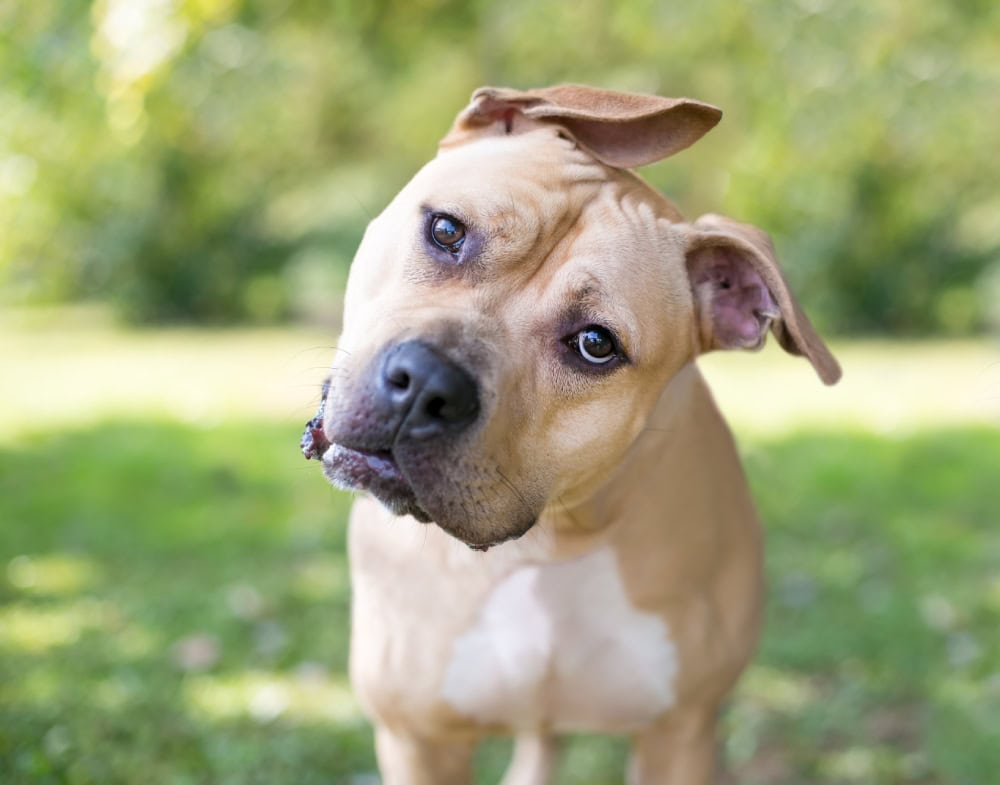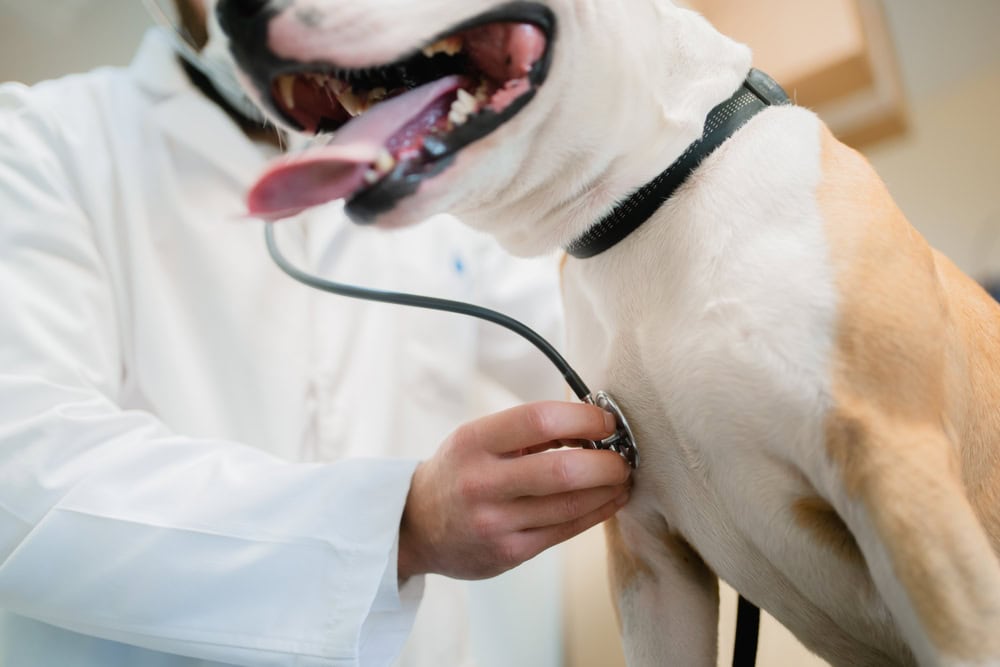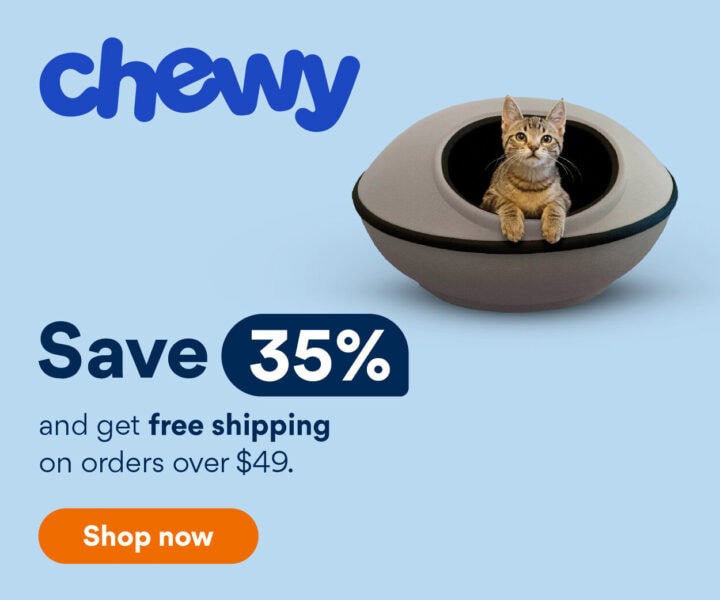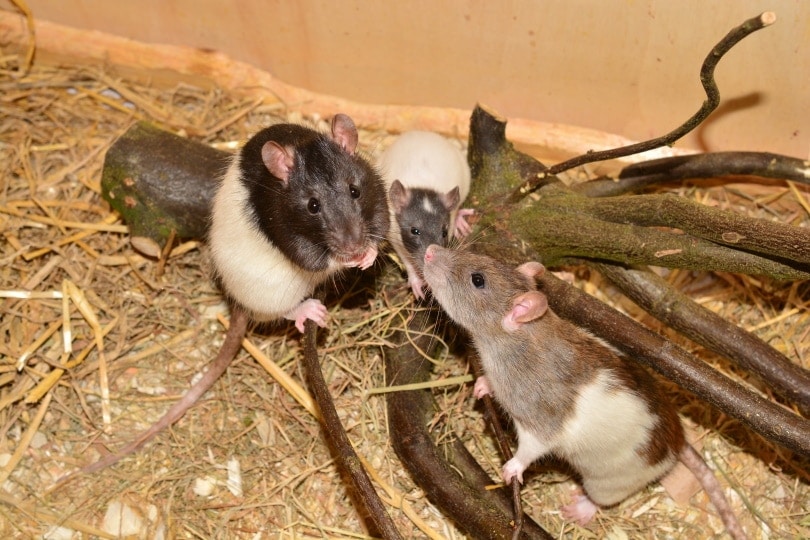
VET APPROVED

The information is current and up-to-date in accordance with the latest veterinarian research.
Learn more »Click to Skip Ahead
The image of cats chasing rodents has been around for centuries. In fact, mice are a part of the diet of wild cats, and many domestic cats were originally bred to hunt rats and other vermin. So, you might think that it’s safe to feed your cat rats. However, this is untrue.
Today, rats are unsafe for cats to eat. Wild rats can carry many parasites and pass on bacterial and viral infections. They can also have ingested rat poison, especially if you live in urban settings. This poison can put your cat at risk if they eat a poisoned rat.
Along with giving you information on the risks of letting your cat eat rats, we also have some safe alternatives that you can feed your feline friend.
Can Cats Eat Rats?
It’s very risky for your cat to eat a wild rat. Rats can carry worms that can transfer to cats. They’re known to be carriers of tapeworms, pinworms, and roundworms. Rats also scavenge for food and easily come in contact with many pathogens, while also they harbor diseases such as leptospirosis, plague, and tularemia. Both humans and cats can catch these highly contagious bacterial infections. There are also plenty of viral illnesses that rats may pass onto your cat or you, such as hantavirus or Toxoplasmosis caused by a protozoan parasite.
Although some urban cities may release feral cats to address mice and rat populations, most cats are not very good at catching rodents, or they’re disinterested. They’d rather select easier prey and food sources, so they’ll often sift through trash bins or eat from food left out by benevolent neighbors. The intended purpose of feral cats may have been to chase out rodents from a specific area because the presence of cats can scare away rats. However, this has led to significant and harmful impact cats have on local wildlife species, mainly birds, while their feral populations are constantly growing and often getting out of control due to cats’ amazing ability to reproduce efficiently.
You might be wondering if it’s a good idea to feed your cat defrosted raw rat meat from a pet store or pet supply carrier. Technically, your cat can eat frozen rats and feel fine afterward, but it’s still pretty risky.
Raw meat is not thermally processed and may be contaminated with viruses and bacteria during the process of storage and transport. Cats will often pick through the fur and bones, which will usually leave a gross carcass in your living space. Also, if you have a cat that enjoys taking time with their food, it might leave the rat out for too long. Raw meat shouldn’t be left at room temperature for more than 1-2 hours because it will become contaminated with harmful bacteria.
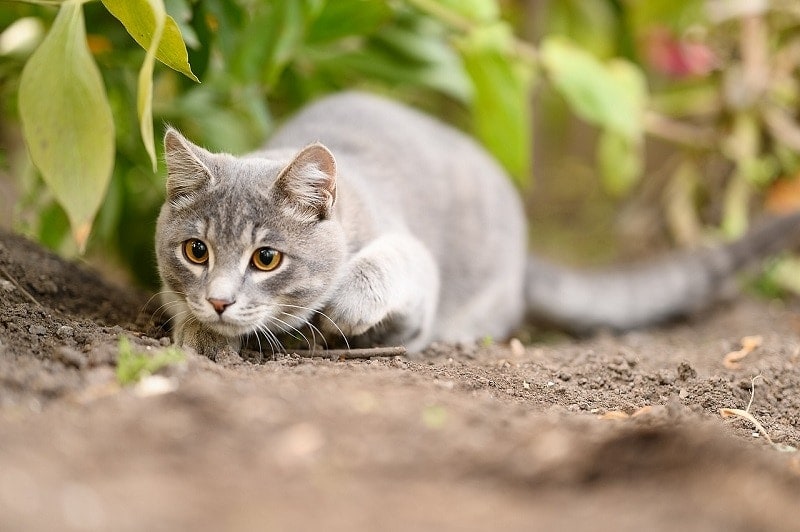
Nutritional Components of Rats
Rats can actually be nutritious prey for wild cats. The average adult rat has a crude protein percentage of about 55% and a crude fat percentage of 25% when measured on a dry matter basis.
Domestic adult cats need a diet consisting of a bare minimum of 26% protein, while diets containing at least 40% protein prevent loss of lean body mass over time. They also do well if their diet consists of fat between 20-24%.
So, when you compare a domestic cat’s nutritional needs and the macronutrient breakdown of rats, rats can be a good source of protein and fat. Unfortunately, wild rats are too risky for cats to chase and eat, and frozen rats can leave a mess, be contaminated with bacteria, and expire quickly.
Safe Alternatives for Your Cat
There are much safer alternatives that you can give your cat. Here are some delicious and safe protein-packed treats and toys that you can give your cat.
Cooked Meat
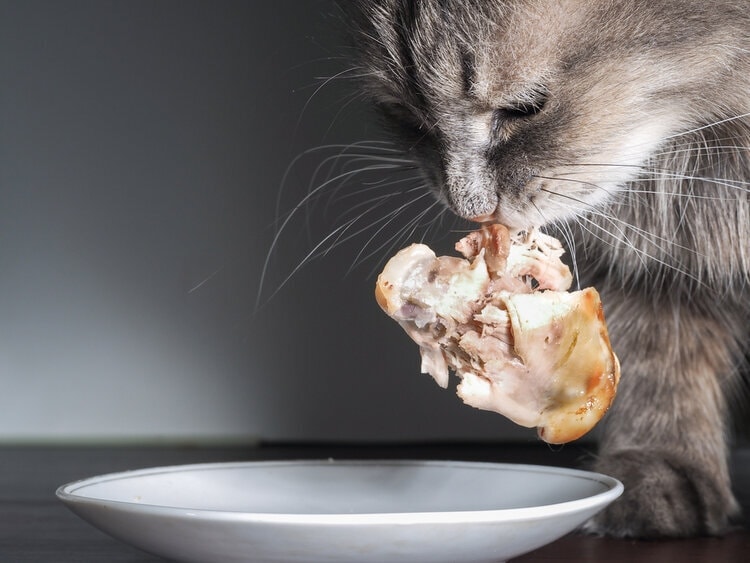
Cats are obligate carnivores, so they love eating animal meat as a main meal and snack. One of the safest ways to give your cat animal meat is to cook it thoroughly. Here are the internal temperatures that common types of meat should reach for them to be safe for consumption:
- Ground beef, pork, veal, lamb: 160°F
- Fresh beef, pork, veal, lamb: 145°F
- All poultry: 165°F
- All fish with fins: 145°F
Automatic Cat Toys
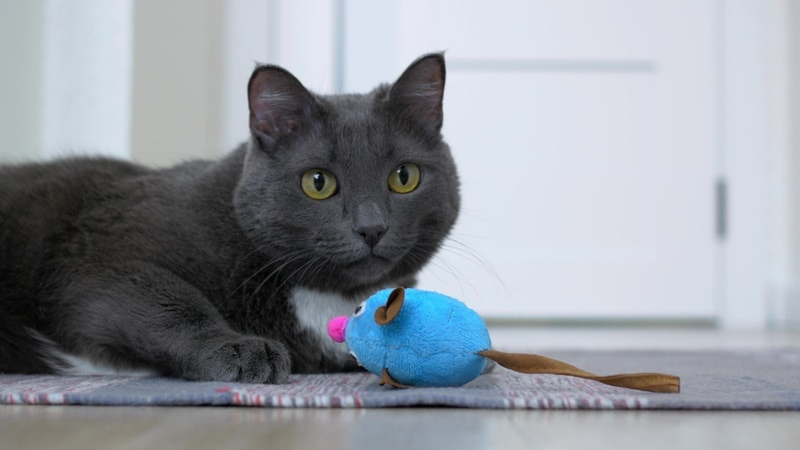
A lot of automatic cat toys mimic the movements of mice. So, if your cat likes to chase, a remote-control cat toy can be an excellent alternative to chasing a wild rat. You can also attach some treats to the toy or use catnip spray to entice your cat to chase and play.
However, do let them catch the toy in order to avoid frustration. Supervise your cats with toys on a string, as some may try to swallow them and can cause significant digestive issues, such as stomach or intestinal blockage, intussusception, or even a string getting stuck around the base of the tongue. All of these conditions are serious and require urgent veterinary attention.
If you want to speak with a vet but don't want to leave home, you can head to PangoVet.com. It's our online service where you can talk to a vet online and get the advice you need for your cat — all at an affordable price!
Freeze-Dried Treats

A lot of freeze-dried treats are sold whole. So, you can find whole pieces of various animal proteins that are processed and packaged for your cats to eat, but this type of food is still considered raw. They’re also a tasty alternative to rats and your cat won’t leave any bits behind. However, the meat processed in this way may still contain harmful bacteria and lead to digestive issues or food-borne illness in your cat or yourself if handled inappropriately.
Consult with your vet about this type of treat and the precautions to take to protect yourself and your cat. Certain types of raw fish should be avoided in cats, as they contain thiaminase, an enzyme that breaks down vitamin B1, thus increasing the risk of thiamine deficiency. Also, freeze drying does not inactivate this enzyme.
Now that you know what you can safely feed your cat, it’s just as important to find a bowl that supports their health and well-being. With whisker-friendly bowls and a wide tray to catch any spills, our Hepper NomNom Cat Bowl is our favorite option.
Conclusion
Although rats technically meet and exceed the macronutrient requirement for cats, other factors make them unsafe to feed to cats. There are much safer alternatives that do an equally great job without the risks.
Not eating rats doesn’t negatively affect your cat’s quality of life. There are plenty of other foods in their natural diet that you can give them. So, they’re not missing out on much if you omit rodents from their diet.
See also:
- Can Cats Drink Vegetable Oil? What You Need to Know!
- Can Cats Eat Barbecue Sauce? What You Need To Know!
Featured Image Credit: Piqsels
How useful was this post?
Click on a star to rate (you can leave written feedback after clicking submit)
Help us improve Hepper for pet parents!
Your feedback really matters.
What did you like about this post? Also how can we improve it?
















